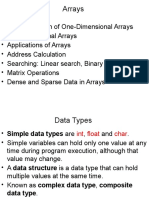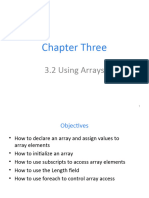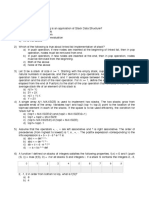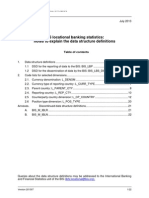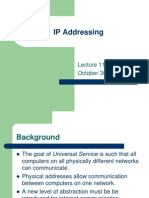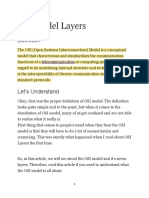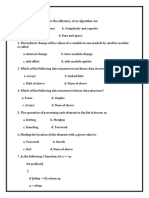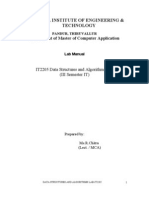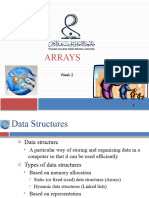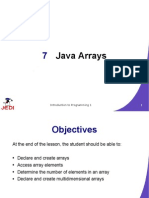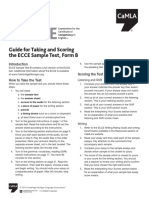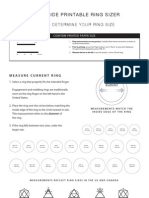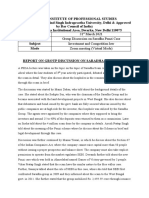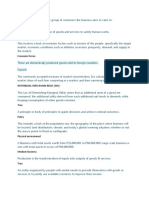0% found this document useful (0 votes)
217 views18 pagesJava Arrays: Concepts and Examples
Arrays allow storing and accessing a collection of data of the same type using indexes. They address limitations of primitive data types by allowing storing multiple values of a type together in contiguous memory locations that can be accessed using indexes. This document discusses key aspects of arrays in Java including primitive data types, creating and initializing arrays, array indexing to access elements, and using loops to iterate through arrays. It provides examples of declaring and using single, multi-dimensional, and nested arrays and calculating element addresses.
Uploaded by
redbutterflyCopyright
© Attribution Non-Commercial (BY-NC)
We take content rights seriously. If you suspect this is your content, claim it here.
Available Formats
Download as PDF, TXT or read online on Scribd
0% found this document useful (0 votes)
217 views18 pagesJava Arrays: Concepts and Examples
Arrays allow storing and accessing a collection of data of the same type using indexes. They address limitations of primitive data types by allowing storing multiple values of a type together in contiguous memory locations that can be accessed using indexes. This document discusses key aspects of arrays in Java including primitive data types, creating and initializing arrays, array indexing to access elements, and using loops to iterate through arrays. It provides examples of declaring and using single, multi-dimensional, and nested arrays and calculating element addresses.
Uploaded by
redbutterflyCopyright
© Attribution Non-Commercial (BY-NC)
We take content rights seriously. If you suspect this is your content, claim it here.
Available Formats
Download as PDF, TXT or read online on Scribd
/ 18



